- Home
- Simon Winchester
Bomb, Book and Compass Page 4
Bomb, Book and Compass Read online
Page 4
They first went to Great Cumbrae Island in the Clyde estuary, outside Glasgow. Soon after that came more ambitious journeys, paid for by grants for the pursuit of biochemical knowledge: the following years they went together to Monterey in California, to the Woods Hole Institute on the south coast of Massachusetts, and to a French marine laboratory in Brittany. Ostensibly they went away to work on matters embryological, and specifically to check on the varying pH of the nurtured fish eggs they found in each of these places. But in fact they spent much of their time talking about their shared interests in Christianity and socialism – and, to judge from their rather saucy holiday snapshots, they had adequate time for erotic amusements, too.
In early 1924 Needham introduced Dorothy to his mother in London, and they then visited her parents in the Devon village of Babbacombe. He proposed to her in midsummer, and they married in the autumn, just before the start of the academic year, choosing Friday, 13 September, as the date for the small ceremony, in a deliberate snub to convention and superstition.
Before the rites they had made it clear to each other and to their friends – though not to their parents – that theirs would be a thoroughly ‘modern’ marriage. Whenever the need seized them they would pursue encounters with others. They would not be hobbled by the tedious, irksome, and thoroughly bourgeois demands of sexual fidelity.
If they had had a child, all this might have changed. But they were not able to conceive: Joseph’s diary records encounters with Harley Street specialists concerned by his low sperm count, which may have been the reason. Still, they were philosophical about their situation. Having a child, they concluded much later, would have cramped their style – or at least his: from almost the very moment they exchanged vows Joseph began to pursue his erotic enthusiasms with great and unstinting gusto.
Few Cambridge women of the time were left free from his attentions. Women who are now well on in years recall these attentions. They remember his wicked grin, his piercing gaze, his courtesy, his Old World charm, his offers of help and advice, and ‘his way of making you feel you are the most important person in the world to him – which of course at the time, you were’. One now elderly woman, Blanche Chidzey, vividly remembers meeting him on a train, talking briefly to him, and then falling asleep, only to awaken when she heard him chatting quietly to a distinguished physicist who was also in the compartment. ‘Naturally I thought some lofty scientific topic must have gripped them – but then I listened, and it was all about me, in terms of chatting me up.’ But he was very polite, she added.
Of Dorothy, who was a more discreet person – a perfect saint, said one admirer, who perhaps heaped praise on her for putting up so stoically with her extraordinary husband – we are not so sure. Joseph was to hint in later years that perhaps his wife was somewhat more sedate than he. She was, he said, ‘not a flamboyant character, but a reasonable person, never outrée or unusual’. Pictures from the time tend to confirm this: she is small and sober, bespectacled, with her hair tight around her head, her coat plain black, her shoes sensible, her smile a little forced; he is tall and slightly comic-looking in a baggy double-breasted suit and scuffed Oxfords, with a small badge in his lapel and a cigarette between his lips, his smile puckish and distant, his mind evidently on other things, far away.
Dorothy Moyle and Joseph Needham on their wedding day, Friday, 13 September 1924. Theirs was to be an ‘open marriage’, which lasted for more than six decades.
The fellows of Caius College did not give the young couple a wedding present. But in October of that year, they offered something of far greater value. Once he had presented and defended his thesis and been awarded his doctorate, they elected Joseph Needham a full-fledged fellow. He now had boundless access to the myriad of unique marvels an ancient university can provide. He had a cosy, firelit room of his own – with a nice symmetry it was K-1, the room once occupied by Sir William Bate Hardy, who had been such an encouragement to him – as well as a library of fine books and a handsome chapel. He could go whenever he wished to the fellows’ oak-panelled combination room to take a usually indifferent sherry or a rather better claret beneath paintings of forgotten divines of noble antiquity. He could bring guests whom he wished to impress or delight to the splendidly proportioned dining hall, where servants set down excellent food at vast tables laden with old silver and porcelain.
His own combination of intellect and charm had been recognized very swiftly – he was still only twenty-four. People were beginning to say that he was on his way to becoming the Erasmus of the twentieth century, so sharp was his mind, so broad his intellectual reach. But however he compared with the great scholars of the past, one thing was certain: he was now settled, and for life. Academically at least, he was made.
His achievements as a scientist, and as a figure with extraordinarily well-rounded interests, were now being noticed well beyond Cambridge. By 1925 he had already edited his first book, a collection of essays by some of the great scholars he had encountered while organizing lectures for the Guild of Saint Luke. All of them Joseph Needham knew personally while he was still a young man: he was a consummate networker, and his social abilities were a further key to his later success.
Six years later he produced another book, Chemical Embryology, this time not an edited collection of other men’s works but a history of embryology entirely written by himself. He was just thirty-one when its three volumes were published by Cambridge University Press; and, though the subject was esoteric and the sales were accordingly minuscule, the sheer scale of the work – and his obvious ability to think big thoughts – hinted at what was to come in Needham’s later life.
Needham suffered something of a breakdown after completing the work, and for two weeks after handing in the typescript found it impossible to sleep because of hearing what he called ‘incessant music’ in his head. Soon, though, he turned his insomnia to his advantage: Dorothy, who liked to recount stories of her husband’s formidable mental powers and his near-photographic memory, said she recalled watching him lying awake in bed, mentally visualizing the books’ page proofs, and then correcting in a notebook any errors or infelicities. Once this activity became too humdrum for him, she said, he further occupied himself by translating the selfsame pages from English into French, also in his head, and then correcting any errors that he fancied he could also see in this new translated text.
And there was more than merely the pride of achievement. The publication of the three volumes made virtually certain the honour that would be bestowed on Needham a decade later: in 1941 he was elected a fellow of the Royal Society, arguably the greatest scientific distinction short of a Nobel prize.4 His writing of a scientific classic while he was still so young a man and so untutored a researcher was something that the greybeards of the Royal Society found wholly commendable, and impossible to overlook – but that some also envied, mightily.
Now that Joseph and Dorothy were married and settled and had established their sexually liberal style of living, it was time for this deeply religious pair to find a church to accommodate them. That might not be easy: not only had its prelates to be supremely tolerant regarding marriage vows, but it had to be a church entirely comfortable with the couple’s socialist leanings.
The Needhams were not easily discouraged, and in 1925 they found just what they were looking for in the Essex village of Thaxted, twenty miles from Cambridge. Here they uncovered as left-wing an Anglican prelate as it was possible to imagine: Conrad Le Despenser Roden Noel, the infamous ‘red vicar’ of the Home Counties, the man the popular newspapers dubbed England’s most turbulent priest.
Noel had been vicar of Thaxted since 1910, notorious as a firebrand, and as having been forced from several livings by congregations who objected to his socialism. But among the parishioners of Thaxted he was to find a wellspring of liberal sympathy, and he flung himself into his role with ferocious enthusiasm. He asked the composer Gustav Holst, who lived nearby, to play his newly composed suite The Planets on th
e church organ; he threw out all the old fusty paintings and hangings in the nave and installed new, colourful linens and cottons; he found a tame pigeon and preached with it sitting happily on his shoulder; he staged a three-part Mass each Sunday, and greatly enlarged the choir to sing in it; and to display his support for revolutionary Christianity, the majesty of England, and the rights of the Irish to be free of colonial enslavement, he ran up the Red flag, the George Cross, and the banner of Sinn Féin all at once on his church’s newly refettled spire. On hearing this, High Church louts from Cambridge swarmed into the village and climbed up the stonework to try to haul down the contentious flags; but Reverend Dr Noel imported teams of striking policemen to guard them, and there was a stand-off lasting some months before a consistory court finally ordered the vicar to remove them once and for all.
Thaxted Church thus became, almost overnight, a place of great stimulation and fun. Before long, Sunday Mass at Thaxted was one of the best attended in the county. Joseph and Dorothy Needham became committed members of the congregation, remaining supporters and friends long after Noel had died in 1942, and well on into their old age.
At Thaxted, Needham also became an eager practitioner of the peculiarly English country ritual of morris dancing. Conrad Noel had first brought the old dance back to Thaxted at the urging of his wife, who felt it important to preserve rural traditions, even though this one was of pagan origin and was held to encourage fertility and the growth of crops. And Needham loved it – he loved the flamboyance and the merriment; the feeling of liberation and joy; the men dressed in loose white fustian with coloured baldrics crossing over their chests and backs, bells on their ankles, and flower-ornamented hats; the handkerchiefs waved and sticks whacked against one another; the pipe and tabor played tunelessly, but hauntingly, in the background.
Morris dancing was first brought back to England from the Muslim world during the Crusades – hence morris, from Moorish – and is the oldest unchanged dance in England. To Needham it was one of the ‘pure creations of the working class’, part of a series of dances that ‘will unite by their remarkable continuity the developed communism of the future with the antique primitive communism of the past’. Not for nothing did morris dancers come out and perform their ungainly and unusual dances on May Day, as they still do today: their rituals celebrate the rural working man, and as such they were, for Needham, a demonstration that true socialism – a caring solidarity among workers – was woven deep into the warp and woof of English society.
His claims may have been extravagant, or wishful thinking. But he danced for most of his adult life, learned the accordion so he could accompany his fellow academic dancers, and played a significant role in creating a renewed enthusiasm for morris dancing that still exists in southern England today. It seems noteworthy that amid all his other work he found time to address the International Folk Dance Congress in 1935: his topic was ‘The Geographical Distribution of English Morris and Sword Dancing’. Like so many of the fascinations in Joseph Needham’s life, what had started as an innocent weekend hobby ended up as a subject for academic discussion and high seriousness. ‘No knowledge,’ his father had said, ‘is ever to be wasted, or ever to be despised.’
Britain’s nine-day general str ike of 1926 finally confirmed Needham as a man of the far, far left – mainly because it did not lead to any obvious victory for the workers. In fact it allowed the Conservative government of the day to pass laws banning such sympathetic strikes, consolidating in Needham’s disappointed mind a notion that had been forming since he was a schoolboy: that his sympathies lay with the workers, totally.
He was by no means a Bolshevik, as he had thought himself as a schoolboy; nor would he ever become a full-fledged member of the Communist Party. But around this time he would devour both Das Kapital and the German edition of Engels’s Dialectics of Nature, and he would throw his hat in with the far left-wing of the British Labour Party now and for the rest of his life. But he was a stalwart who would also be firmly wedded to his creature comforts – such as his magnificent Armstrong Siddeley car (though he did write to the company’s founder, Sir John Siddeley, asking that none of the firm’s money be used to finance military research, as it was once rumoured to do).
He became very much an activist – a militant, almost. He was forever writing letters to newspapers, pamphleteering, designing placards, campaigning, marching, taking up causes. He demanded, for instance, that Britain boycott the Olympic Games of 1936 in Berlin. He complained on behalf of the National Council for Civil Liberties about heavy-handed police actions at an airfield at Duxford, where pacifists had tried to hand out leaflets during an air show, and found themselves arrested. (They ‘should be shot’, Needham records one local as muttering to him when he went to the show to see for himself.)
His colleagues on the National Council for Civil Liberties represent a roll call of the intellectual left of the day: E. M. Forster, Clement Attlee, Nye Bevan, Havelock Ellis, Dingle Foot, Victor Gollancz, A. P. Herbert, Julian Huxley, George Lansbury, Harold Laski, David Low, Kingsley Martin, A. A. Milne, J. B. Priestley, Hannen Swaffer (a former neighbour in south London), R. H. Tawney, H. G. Wells, Rebecca West, and Amabel Williams-Ellis.5 All of them became firm friends. He addressed the University Socialist Society, finding himself lecturing to a comrade named Kim Philby, Trinity College representative, who would later become notorious as one of Britain’s most celebrated spies. Needham joined forces with the extraordinary social anthropologist Tom Harrisson, a founder of Mass Observation.6 He was enormously influenced by the communist crystallographer J. D. Bernal, and joined Sir Solly Zuckerman’s famous scientific dining club, the Tots and Quots. He was, in other words and in all ways, a figure of the left-wing establishment, his credentials never in doubt, his subscriptions and his fealties always paid in full.
All this frantic activity led to some predictable muttering in the college. A number of the older fellows of Caius said that Needham’s socialist leanings suggested a growing eccentricity, and the possibility that he was becoming unsound. Eccentricity was generally a backhanded compliment; but unsound was as pejorative as any word in the establishment’s lexicon. Needham was notably thin-skinned in his youth, highly sensitive to criticism of any kind: ‘I shall have nothing further to do with your journal,’ he wrote to the editor of the Cambridge Review, after the publication ran an essay lambasting him for his idealism and his left-wing views, ‘until your influence is decisively removed from it.’ But later, when he was more seasoned, Needham took attacks in his stride. He would quote an old Arab aphorism: ‘The dogs may bark – but the caravan moves on.’
Not surprisingly Needham was an instantly recruited and enthusiastic supporter of the Republican cause in the Spanish civil war, to which every left-winger in Europe became magnetically affixed from the moment it began in the summer of 1936 He never went off to fight, arguing that he had a full-time teaching job. But he campaigned, spoke out, attended rallies, organized. He lobbied hard, for instance, for the welfare of a group of Basque refugee children who were marooned in the village of Pampisford, just south of Cambridge. He helped design and test for the Republicans a plywood-and- deal field ambulance, powered by an American Harley-Davidson motorcycle engine – but it ran amok and smashed down a garden fence, for which Needham paid personally, and promptly, saying it would do the cause much harm if the bill went unsettled. And, most crucially, he also became a significant contributor to the Cornford— McLaurin fund, set up by the British Communist Party to help the families of two Cambridge members of the International Brigade – John Cornford, a 21-year-old poet; and the New Zealander Campbell McLaurin, a mathematician – both of whom had been killed in the fight for Madrid in 1936.
The year was a grisly one, in Spain and elsewhere. Although in America the Great Depression was starting to lift and a cautiously optimistic country would re-elect Franklin Roosevelt to a second term in the White House, it was the wretchedness of Europe that preoccupied the world: the Spanish war
, the Berlin Olympics (which Needham wanted Britain to boycott), the Nazis’ occupation of the Rhineland, the world’s growing awareness of Adolf Hitler, and even the sad farce of King Edward’s abdication most properly defined the year. And for the world the following twelve months would scarcely be better – Europe would suffer the first real fear that it was soon to be plunged into one almighty war; and with an outbreak of shooting on a bridge outside Beijing in 1937, China and Japan were promptly plunged into another.
Yet for Joseph Needham 1937 happened to be a very good year, and one that marked a turning point for him. The crucial moment came late one sunny summer day when he was contentedly sequestered in his laboratory. There came a soft knock at his door. He had a visitor.
∗
In June, in the hot, teeming city of Shanghai 8,000 miles to the east of Cambridge, a young and highly capable woman was preparing to board an ocean liner, bound for England, and for a new life immersed in a brand-new science.
Lu Gwei-djen, the daughter of an esteemed apothecary in Nanjing and now a budding biochemistry researcher, was clever, glamorous, and thirty-three years old when she joined the Blue Star liner headed for its long sea voyage to the port of Tilbury, outside London. She was travelling to England, and specifically to Cambridge, for one reason only: to meet and work with the biochemical couple she admired above all others – Joseph and Dorothy Needham.

 The Surgeon of Crowthorne
The Surgeon of Crowthorne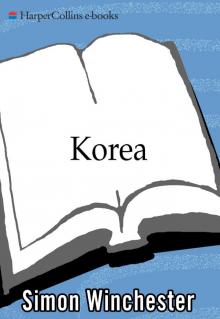 Korea: A Walk Through the Land of Miracles
Korea: A Walk Through the Land of Miracles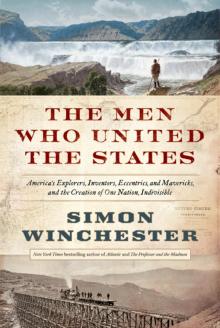 The Men Who United the States: America's Explorers
The Men Who United the States: America's Explorers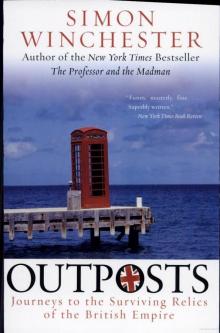 Outposts: Journeys to the Surviving Relics of the British Empire
Outposts: Journeys to the Surviving Relics of the British Empire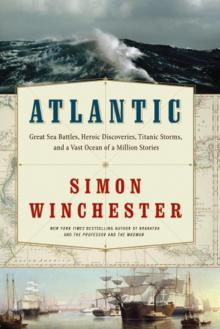 Atlantic: Great Sea Battles, Heroic Discoveries, Titanic Storms
Atlantic: Great Sea Battles, Heroic Discoveries, Titanic Storms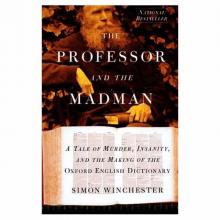 The Professor and the Madman: A Tale of Murder, Insanity
The Professor and the Madman: A Tale of Murder, Insanity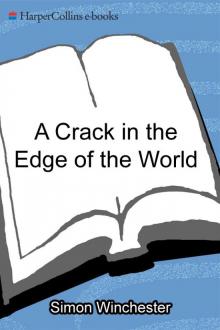 A Crack in the Edge of the World
A Crack in the Edge of the World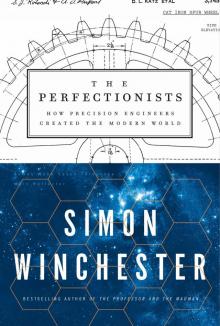 The Perfectionists: How Precision Engineers Created the Modern World
The Perfectionists: How Precision Engineers Created the Modern World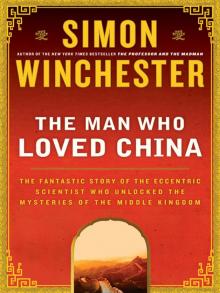 The Man Who Loved China: The Fantastic Story of the Eccentric Scientist
The Man Who Loved China: The Fantastic Story of the Eccentric Scientist The River at the Center of the World: A Journey Up the Yangtze
The River at the Center of the World: A Journey Up the Yangtze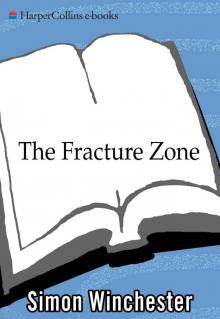 The Fracture Zone: My Return to the Balkans
The Fracture Zone: My Return to the Balkans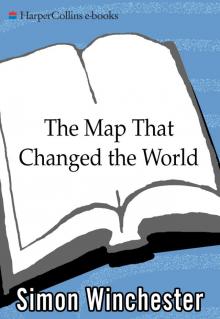 The Map That Changed the World
The Map That Changed the World Krakatoa: The Day the World Exploded
Krakatoa: The Day the World Exploded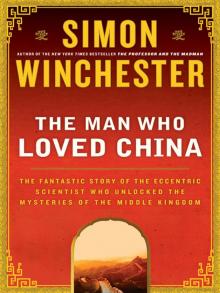 The Man Who Loved China
The Man Who Loved China The River at the Centre of the World
The River at the Centre of the World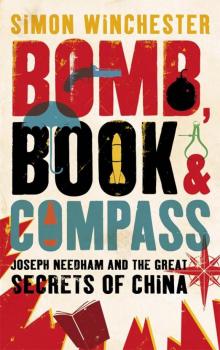 Bomb, Book and Compass
Bomb, Book and Compass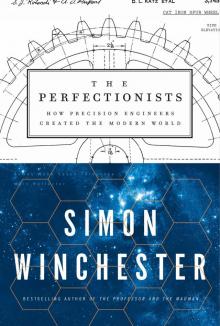 The Perfectionists
The Perfectionists The Meaning of Everything
The Meaning of Everything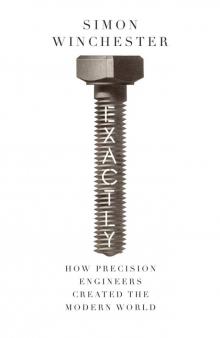 Exactly
Exactly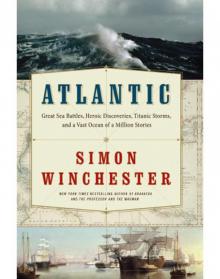 Atlantic
Atlantic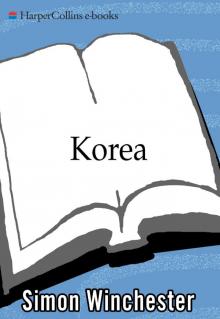 Korea
Korea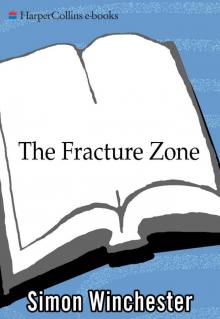 The Fracture Zone
The Fracture Zone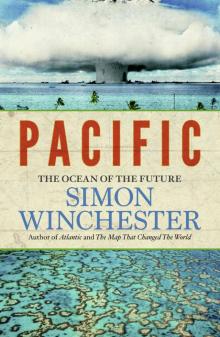 Pacific
Pacific Krakatoa
Krakatoa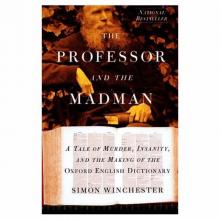 The Professor and the Madman
The Professor and the Madman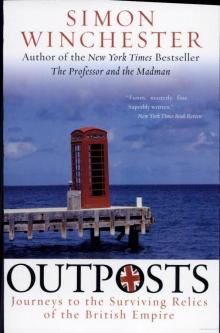 Outposts
Outposts